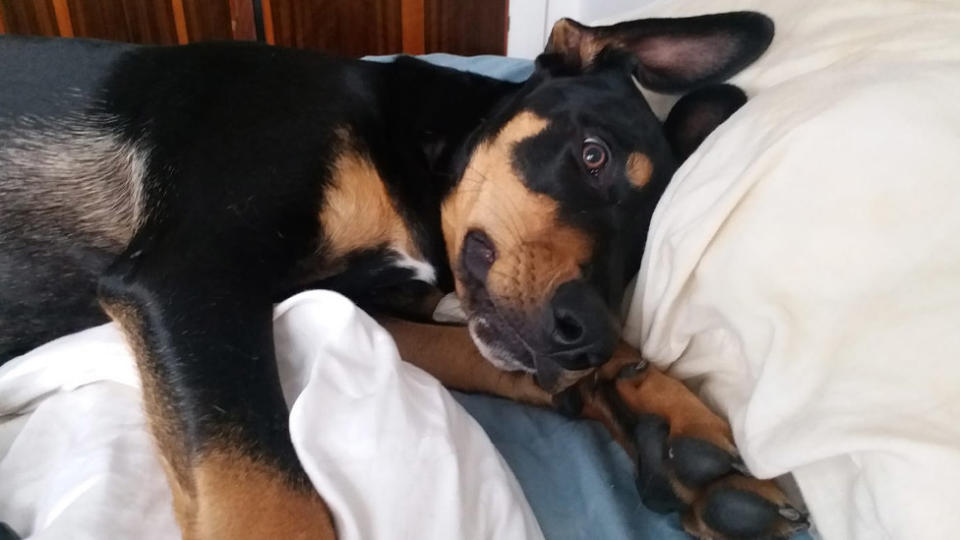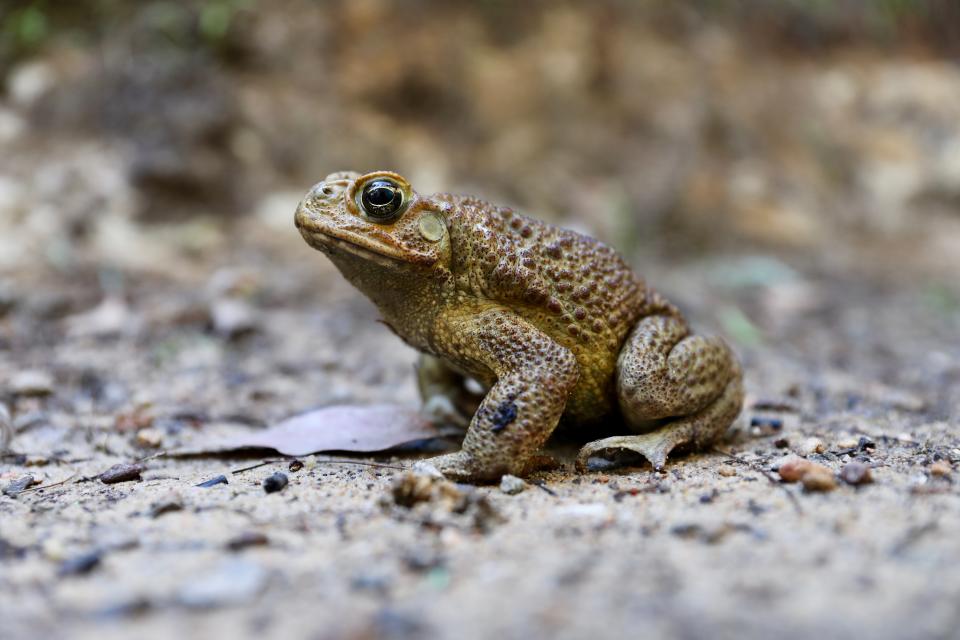Dog owner's warning over potentially fatal threat to pets
A woman has urged pet owners to be careful after her Dobberman puppy Major tried to eat a highly poisonous cane toad.
Rachel Hovey said she recently moved from NSW to the Redcliff Peninsula, northeast of Brisbane, and was surprised when Major chased one of the pests.
“I have lived south of the border for 28 years so cane toads are a new oddity for me,” she wrote on a Facebook group.
“I have a handsome Dobberman puppy that tried to eat one tonight. I have never seen a cane toad in my yard in the eight months I have lived here.

“What is your best advice for this new Redcliffian when it comes to keeping Major the Dobberman safe?”
Mr Hovey was quickly inundated with suggestions from locals on how to keep her pet safe.
If a dog makes contact with a cane toad, many people suggested rinsing their mouth with water from a hose or milk before rushing them to a vet.
To keep the annoying pests out of the backyard, others said to remove any debris that toads could hide under and keep water and food bowls out of reach.
“Don’t let the dog out at night unsupervised,” one woman said.
What are cane toads?
More than 100 cane toads were introduced in Queensland in 1935 as a way of eradicating beetles eating sugar cane crops, according to the RSPCA.
Decades later, the cane toad population has since exploded to two billion.
The toads have a rough, leathery appearance with warty skin and poison glands on their shoulders that produce bufotoxin.
“Bufotoxin is poisonous to both dogs and cats, and also to most native species. It is essential for Queensland pet owners to be able to identify a cane toad, recognise the signs of poisoning in their dog or cat, know what to do to help their pet, and lastly, how to humanely euthanase cane toads,” according to the RSPCA.

When a pet licks or eats a cane toad or tadpole, the toxin is released into their stomach and mouth.
In small doses, the symptoms can be similar to a psychedelic drug and will not be fatal.
In larger doses, pets can show possibly fatal symptoms like vomiting, difficulty breathing, foaming at the mouth, increased heart rates and seizures.
“An adult cane toad has enough toxin to kill an average sized dog in 15 minutes,” the RSPCA said.
Owners are urged to flush their pet’s mouth out with water with their head titled downwards and wipe their mouth with a clean towel multiple times before seeking medical help.
Residents who spot cane toads on their property are recommended to kill them humanely.
Toads will die if they are sprayed with HopStop and then disposed of in the bin, or if they’re placed in a plastic bag and put in a fridge for 12 hours to anaesthetise them before shifting the body to the freezer, where they will die painlessly, the RSPCA said.
Do you have a story tip? Email: newsroomau@yahoonews.com.
You can also follow us on Facebook, Instagram and Twitter and download the Yahoo News app from the App Store or Google Play.



